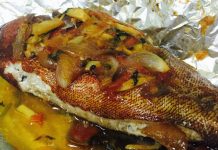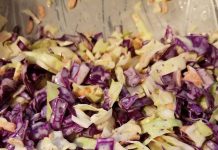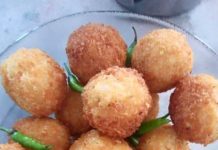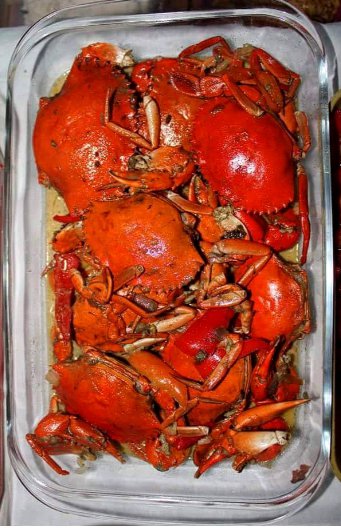“Curacha is a spanner crab or red frog crab is a local Chavacano native term name given to a sea crab species found in Sulu province Zamboanga. It is only found in the deep-waters of Jolo and can’t be found anywhere else in the world. Wow, truly only in the Philippines!
Curacha abound in waters of Sulu but not Zamboanga. It is known as “Kagang Pamah in Tausug of Mindanao. It is a hybrid crustacean, with crossbreed characteristics of a large sea crab and a big spiny lobster. It is a large crab with a red color, which stays the same in color even when cooked. The crab is usually steamed or boiled so its flavor is preserved. Unlike most crabs whose majority of meat can be found in their claws, the mother-load of the curacha’s meat is found in its body.” Who’s drooling now?
Ginataang Curacha with Alavar Sauce
INGREDIENTS
- Spanner crabs, cleaned
- 1 large onion, finely chopped
- 2 tablespoons crushed ginger
- 2 tablespoons crushed garlic
- 1 1/2 teaspoons ground turmeric
- 2 large red chilies, chopped
- 250 ml roasted coconut milk (procedure below)
- 250 ml canned coconut milk
- salt and pepper to taste
- Vegetable oil
INGREDIENTS
- Heat the oil and saute the onions over medium heat until translucent and soft, around 10 minutes.
- Add the ginger and garlic and saute until fragrant, a minute or two.
- Then add the turmeric and fresh chilies. Add the roasted coconut milk (if using, otherwise, add a total of 500 ml regular coconut milk) and season to taste.
- For a smoother sauce, blend using a hand held stick blender. This is optional.
- Lastly, add the spanner crabs and cook for around 7 to 10 minutes until the crab meat is cooked through.
Procedure for Roasted Coconut Milk:
- First you have to crack open a mature coconut (we call it niyog in the Philippines, it is the one with the brown outer shell).
- Once open you then have to crack the coconut down even further by placing it in a plastic bag, covering it with a tea towel and bashing as hard as you can with a hammer.
- Then, you have to try and pry the coconut pieces away from the shell.
- Once you have your meat, grind it through a food processor until coarsely ground and then toast over a pan, stirring constantly until it begins to release a fragrant coconut smell and starts to turn golden brown.
- Return the toasted coconut to the food processor and add around 1 cup of hot water and grind until very fine.
- Place a sieve covered with a muslin over a bowl and pour the coconut on the sieve. Squeeze the muslin to extract as much milk as possible. This is called the roasted coconut milk.
Credits to: trissalicious.com/2009/11/02/philippine-cuisine-spanner-crabs-with-alavar-sauce
















